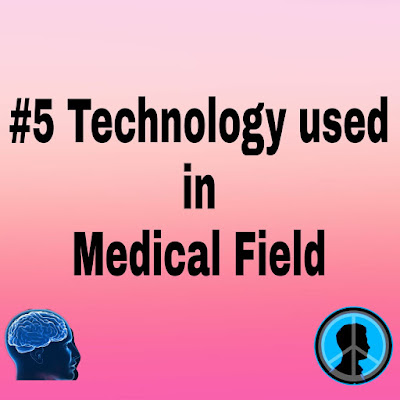In Today`s world, technology plays a very crucial role in every industry and in our lives. Out of all of the industries that technology plays a crucial role in, healthcare is definitely one of the most important.
Continuos innovation in medical field have allowed physicians to better diagnose and treat their patients since the beginning of the professional practice of medicine.
We have listed 5 technologies that are currently used in medical field.
Continuos innovation in medical field have allowed physicians to better diagnose and treat their patients since the beginning of the professional practice of medicine.
We have listed 5 technologies that are currently used in medical field.
1. 3-D Printing:
The 3D printing technology first became visible in the late 1980’s, at which time they were called Rapid Prototyping (RP) technologies. In these years, 3-d printing is evolved to a greater level.
In medical sector, 3D printing is already making its presence felt. It is used in categories like: creation of customized prosthetics, implants, tissue and organ fabrication; manufacturing of specialty surgical instruments, pharmaceutical research regarding drug fabrication, delivery, and discovery as well as manufacturing medical devices. 3D printing benefits in medicine not only include the customization and personalization of medical products, drugs, and equipment, but also cost-effectiveness, increased productivity, less time consumption, and enhanced collaboration.
Ninety-five percent of all hearing aids are today 3D printed.
2. Medical Robots:
Challenges in medical field are rapidly growing and to overcome these medical challenges we scientists developed medical robots. Medical robots allow procedures such as surgeries, treatments, and diagnoses to be conducted across short or long distances while using wired and/or wireless communication networks. Medical Robots are considered to be an integral part of the wider field of telemedicine.
The ultimate goal of telemedicine is to provide specialized healthcare services over long distances, effectively eliminating the need of physical presence of both the physician and patient in the same location.
3. Artificial Intelligence in Healthcare:
Artificial intelligence (AI) in healthcare uses software and algorithms to approximate human cognition in the analysis of complex medical data. Specifically, AI is the ability of computer algorithms to approximate conclusions without direct human input. The primary aim of AI in healthcare applications is to analyze relationships between prevention or treatment techniques and patient outcomes. AI programs are used in practices such as diagnosis processes, drug development, treatment protocol development, personalized medicine,and patient monitoring and care.
According to Accenture analysis, clinical health AI applications can potentially create upto $150 billion in annual savings for the US healthcare economy by 2026.
4. Battery Powered Germ-Killers:
Medical engineering students from the North Carolina State University Department of Industrial and Systems Engineering are developing nanotechnology built directly into orthopedic implants. A battery-aactivated device powers an army of microscopic germ-killers to fight bacterial infections, including methicillin-resistant MRSA or Staphyloccus aureus. The process applies a low-intensity electrical charge to a silver titanium implant, releasing low-toxicity silver ions that kill or neutralize bacteria. The power source is similiar to a watch battery and can be integrated into the implant design.
5. Wearable health trackers:
An wearable health tracker, also known as a fitness tracker, is a device or application for monitoring and tracking fitness-related metrics such as distance walked or run, calorie consumption, and in some cases heartbeat and quality of sleep. The primary aim of these gadgets is to track, collect your body performance and to give early health warning messages.
In next part of this post (technology used in medical field), we will show some more interesting technologies.









0 Comments